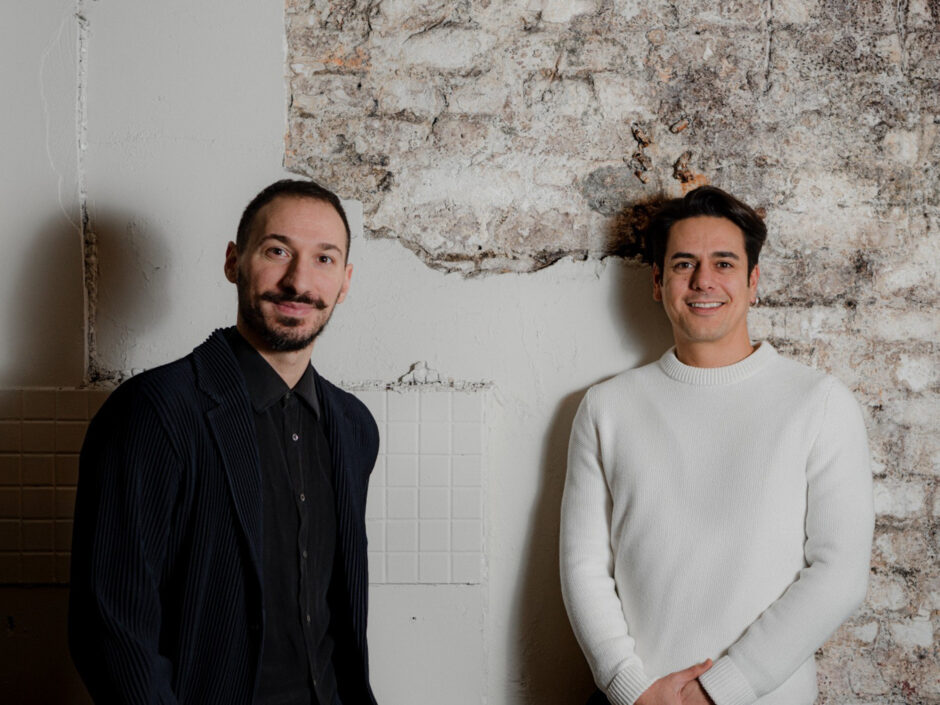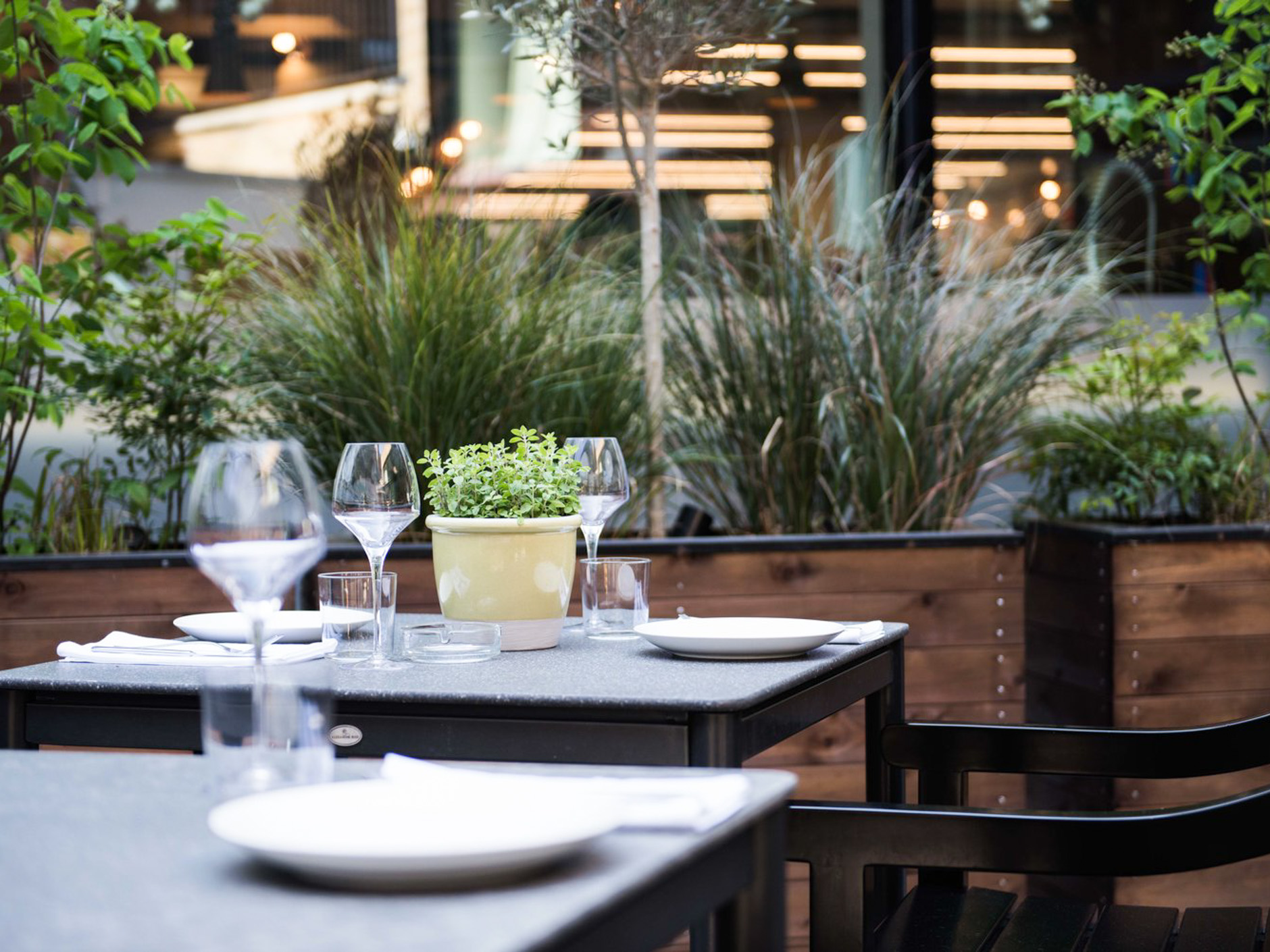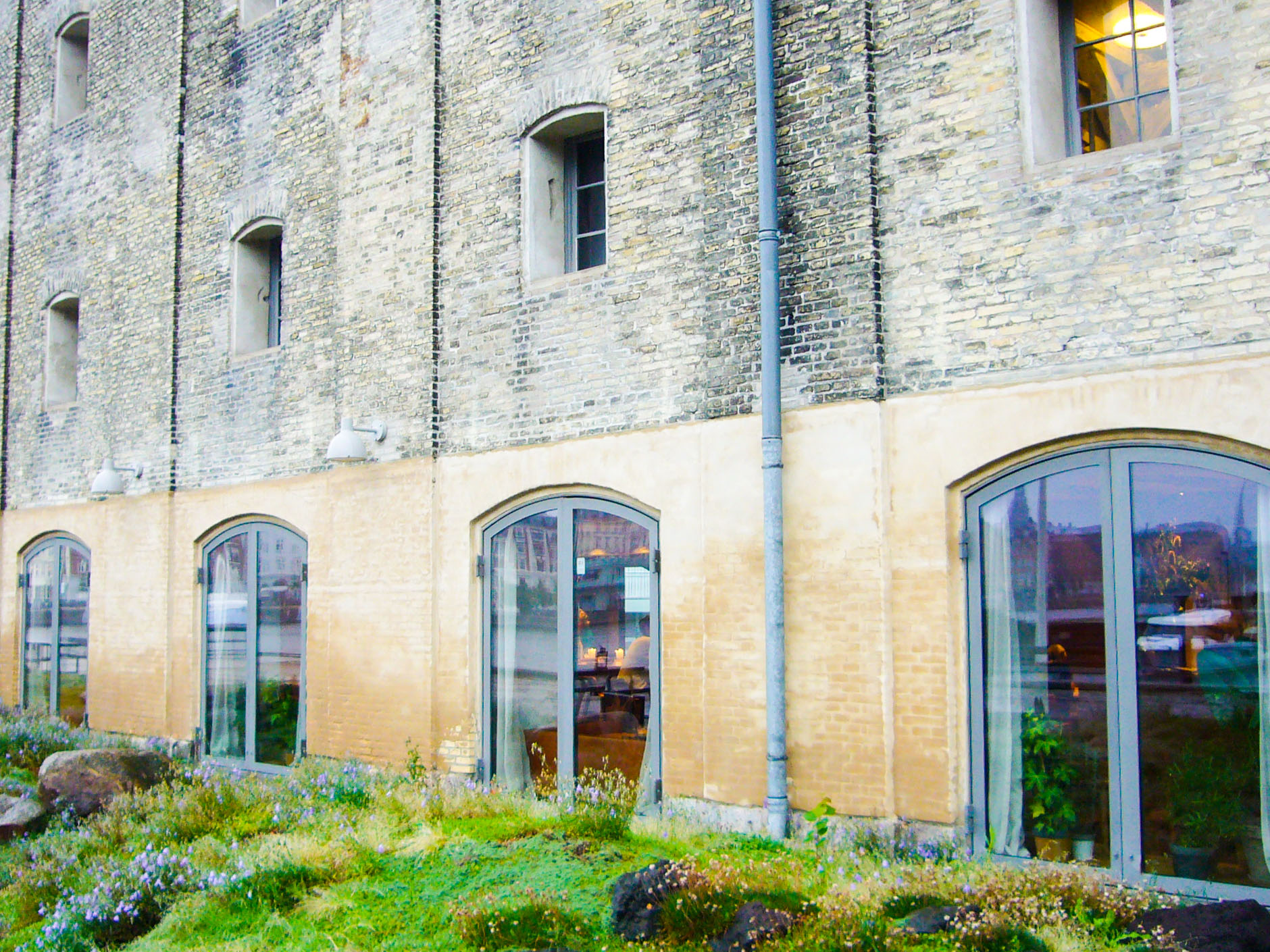Behind every restaurant there are designers who help to create what can be an elusive part of the dining experience: the ambience. Atelier Wren are a relatively new company but they have already done some very impressive work. Taking a refreshingly interdisciplinary approach to interior design, their work so far includes Caia in Notting Hill, the Mayfair branch of Saltie Girl and Pitch Soho. There seems to be no stopping them with many upcoming projects in the UK and beyond.
Palate editor J A Smith (JS) caught up with Atelier Wren’s dynamic co-founders, Jake Raslan (JR) and Lorenzo Buscaroli (LB), to discuss the design process, music in restaurants, working with artists in other fields, upcoming trends and much more.
JS: Atelier Wren is an interesting name. What was the inspiration for your business?
JR: Lorenzo and I met when we worked together on Wren Street and we liked the word “atelier” as it means both workshop and studio for creatives. It probably sounds very pretentious, but we like to see ourselves as creating bespoke spaces for our clients, almost like sculptors, crafting in their workshops.
Wrens are small birds with loud voices. We thought that was quite apt considering Atelier Wren is the ‘new kid on the block’ despite our experience and being blessed with some very established clients.
JS: What are you working on at the moment?
LB: We are onsite with House of Ming which will be a high-end Chinese restaurant in St James’s. We’re also working on a big bar in Canary Wharf, luxury spa facilities in Kensington and a high-end Indian restaurant on Portman Square which will all open in summer 2023.
JR: Looking ahead to 2024, we are also designing suites in a five star hotel in London. We have also designed the ground floor of hotel in Surrey that will open in April 2024 and are designing a food and wine led boutique hotel in Lyon for early 2024. So yes, we have quite a lot on but we have an extremely capable team and all love what we do so it doesn’t feel like “work” per se!
JS: How did you get in to restaurant design? What drew you to it?
LB: Jake comes from an architecture background, previously designing high profile cultural buildings in the Middle East, while I come from a structural engineering background in Italy. That helps us in terms of the design skillset and rigour with which we approach projects. The passion comes from “placemaking”. We love the process of developing and delivering the finished space. The cherry on top is that we design spaces that we can visit with friends and family.
JS: How do you go about designing a restaurant?
LB: Without giving too much away, we love films… Jake in particular is a bit of a film buff. He is always raving about obscure films from Taiwan to Timbuktu!
JR: As a result, a lot of the inspiration we start with comes from obscure movie scene references. These of course have to fit the restaurant’s brief, the context, be sympathetic to the site and be within the client’s budget. We take pride in manipulating lighting schemes to enhance new and existing features to “set the scene” for experiential venues for the main event: enjoying the food!
JS: That’s very interesting. Films can have great soundtracks too, though music in restaurants can be a contentious subject. Some old school places like Rules insist on silence but it somehow works in that setting; in others, music enhances the dining experience. What’s your view on that and how do you get the right balance?
JR: We have never designed a venue that requires silence… that would be an interesting exercise in materiality to match the acoustics: upholstery to minimise footstep echoes and clanging cutlery in waiterstations! Generally our designs are reasonably accessible, even super-lux hotel rooms and high-end restaurants. It’s important that while guests and diners should see things are beautifully made with no expense spared, we still want them to feel that they can use, and therefore be able to enjoy the space.
LB: We have little say in the music normally but it’s important the type of music doesn’t make people feel excluded. Normally we like it when the music enhances, rather than distracts for restaurants.
JR: Some of our clients are “vinyl-heads” (the Caia and Pitch guys come to mind). The venues we have designed for them reflect a bit of who they are: so the music is a key ingredient to those spaces. Their clientele seek this out and so we push that to the forefront by displaying the vinyl collection or the DJ theatrically for instance.
JS: There seems to be a trend at the moment for maximalism in restaurants like Circolo Popolare or the Greco-Roman fantasy of Bacchanalia, contrasting with the minimalism of the early noughties. Do you take much notice of these things or do you do your own thing? What trends do you think we can expect?
JR: We don’t take too much notice. Our designs are very specific to the requirements of the projects. House of Ming is quite maximalist in patterns and colours whereas the spa in Kensington is going to be very calming.
Trend-wise we believe there will be more interactive elements in restaurants and bars due to the importance of social media (Instagram and now the push by TikTok to make people post reels). In essence these will always be kitsch, so the challenge will be to embrace the humour/fun of them and make them relevant to the venue.
JS: I understand you’ve been working with artists from TV and theatre which may not be a conventional choice when it comes to designing restaurants. How have you found that experience? Does an interdisciplinary approach work for you?
LB: We love it. These artists are experts in their field and are incredibly knowledgeable. They can bring more to a project than someone who doesn’t paint for a living can.
Occasionally we will have the odd scheduling clash with their work on a big Netflix series or some Pinewood Studio made blockbuster but over the years we have become friends with so many of them and truly value their opinions and skills.
JS: You clearly both have a lot on and work hard. What keeps you going?
LB: Caffè espresso…!
JR: We are ‘people guys’ and our whole process is so collaborative: it’s a massive team effort and that is exciting and intoxicating. To start with we have a great team at Atelier Wren and therefore a vibrant studio atmosphere. They make the late nights in the office fun.
Then you have the enthusiasm and excitement of our clients: that is contagious and a real motivator.
The consultants and the build teams that we have worked with have all been good people and super knowledgeable and hardworking. Their insight and dedication has helped realise some great things on projects with us and so during the build, we never want to let them down by not being there, helping work out things along the way.
The whole process is challenging but very rewarding.
JS: What would be your advice to anyone wishing to embark on a career in design?
JR: Be a sponge for knowledge and be nice to people.
LB: It’s amazing how much you can learn from anyone, and how those lessons can help you in the future.
JS: Finally, a quick question we ask all our interviewees: what three dishes have impressed you recently?
LB: In the past two months I’d say the red mullet, fennel, blood orange and bottarga at Brawn.
JR: The oxtail pithivier at Clipstone and the breadfuit curry at Kolamba.
JS: Those all sound wonderful dishes. Well, thank you very much for your time and best of luck with your projects.
This interview took place in February 2023. Cover photo provided courtesy of Atelier Wren.






